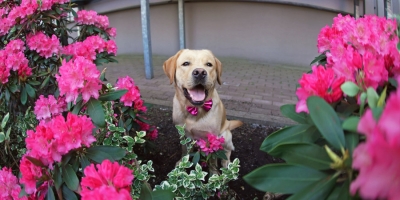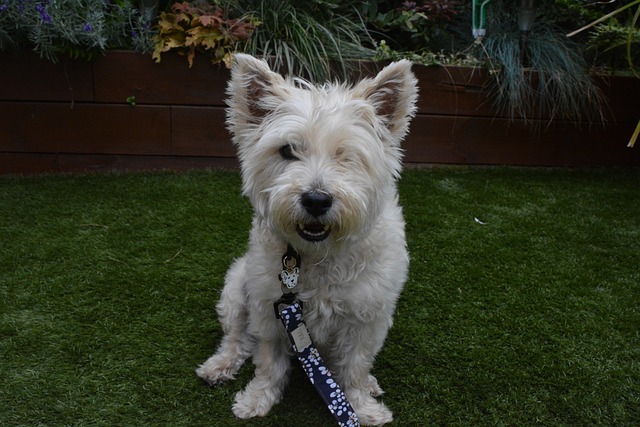NEW YORK, May 15 — Spring is a crucial time for plant lovers. It’s the time to prepare your garden or window boxes for the fine weather to come. But if you share your life with a cat or a dog, you need to be careful about the plants you choose because some of them can be dangerous for pets. Here are five plants that you should avoid.
Amaryllis
Undoubtedly one of the prettiest houseplants around, amaryllis inspires admiration in all who see it, thanks to its large, colorful blooms. However, it has less pizzazz in spring, when its foliage turns yellow. It regains its beauty in winter, which explains why this plant is often given as a gift during the festive season.
But for our furry friends, the amaryllis is no gift at all. It contains lycorine. This substance is harmful to animals because it irritates the gastric mucosa. It can cause vomiting, diarrhoea, abdominal pain and sometimes convulsions in pets that ingest bits of amaryllis.
Advertisement
Owners should take particular care that their pets do not ingest amaryllis bulbs, as they are more toxic than the plant’s leaves and flowers. If they notice any symptoms of intoxication, they should consult a veterinarian without delay.
Oleander
Few shrubs are as reminiscent of Provence and the South of France as the oleander, a plant that is typical to Mediterranean regions. Gardeners love oleander for its flowers, which can be white, pink, red, yellow, orange, purple or even two-tone.
Advertisement
However, they are often unaware that this shrub contains substances that are extremely toxic to dogs and cats. These are cardiac glycosides, compounds that slow, strengthen and regulate the heartbeat. They can cause death by cardiac arrest, even if the animal ingests only a few oleander leaves.
When fresh, oleander leaves have a bitter taste that repels pets. But they are much more appetising to them when dry. If ingested, they can cause repeated nausea and vomiting. Abdominal pain and diarrhoea can also occur, as can hypersalivation. When the first symptoms appear, it’s vital to consult a veterinarian to prevent them from worsening.
Lily
Lilies are known for their large flowers with imposing petals, which can be white, red, mauve, yellow or even two-tone. Most varieties are fragrant, making them perfect for bouquets and floral arrangements.
Cats are often attracted by the enchanting scent of a lily, but their owners must be careful not to let them get too close. The plant contains chemicals that can cause serious kidney damage. Ingestion of very small quantities of any part of the lily (petals, leaves, pollen, or even the water in the vase) can lead to acute kidney failure in cats.
Symptoms of intoxication are numerous: Vomiting, diarrhoea, dehydration, loss of appetite, lethargy, excessive salivation, and so on. They must be treated as quickly as possible to prevent them from worsening, which could lead to the cat’s death.
Dogs are less sensitive to the chemical substances contained in lilies, but it’s still advisable to take care that they don’t play with the plant’s bulbs.
Rhododendron
The word rhododendron comes from ancient Greek, and literally means “rose tree.” And this is not surprising, given that this shrub is distinguished by its abundant flowers of different shapes, sizes and colours. Its thick evergreen foliage easily withstands the elements, which explains why rhododendrons can be found in so many gardens.
But pet owners should beware of this seemingly harmless shrub. It contains grayanotoxins, chemical substances that affect the sodium channels of nerve and muscle cells, disrupting the normal transmission of nerve signals. Ingestion of these toxins can lead to a multitude of symptoms, including vomiting, diarrhoea and excessive salivation. In the most worrying cases, the animal may present cardiac and respiratory problems, or even convulsions.
The severity of symptoms may vary according to the amount of rhododendron ingested and the animal’s sensitivity. However, rapid veterinary intervention is often necessary to prevent serious complications.
Tulip
Tulips come in a multitude of varieties and colours, to suit all tastes. With their cup-shaped blooms, they’re a favorite among gardeners. The Dutch even dedicate a national day to the tulip each January.
Despite its harmless appearance, this flower is nonetheless harmful to dogs and cats. This is due to tulipalins A and B, toxic compounds found mainly in tulip bulbs. If ingested, pets will experience digestive problems such as nausea, vomiting, diarrhoea and abdominal pain. They may also experience tremors and mood disorders.
Fortunately, tulip bulb ingestion is not lethal to animals. They should, however, be taken promptly to the vet for appropriate treatment. — ETX Studio








